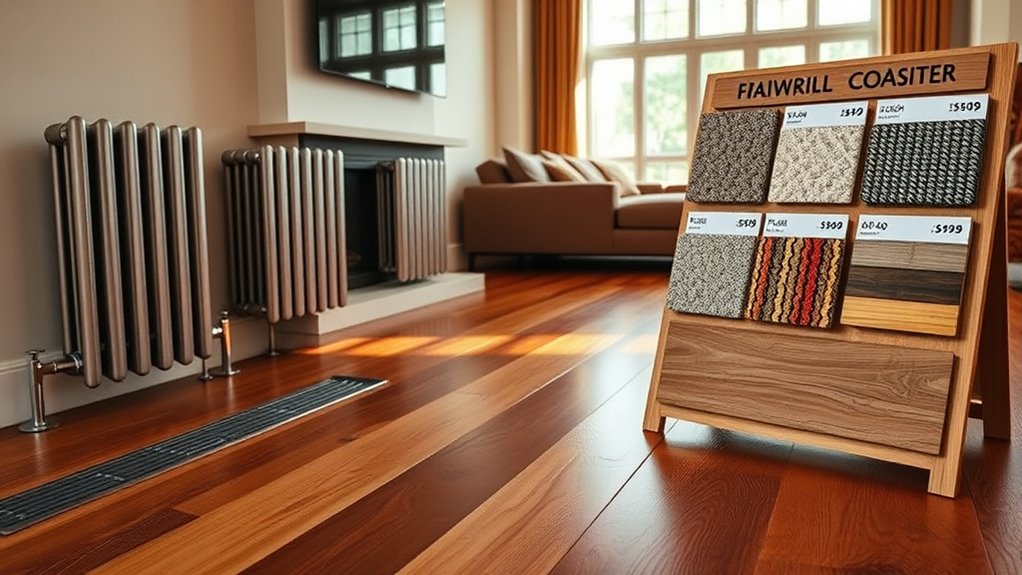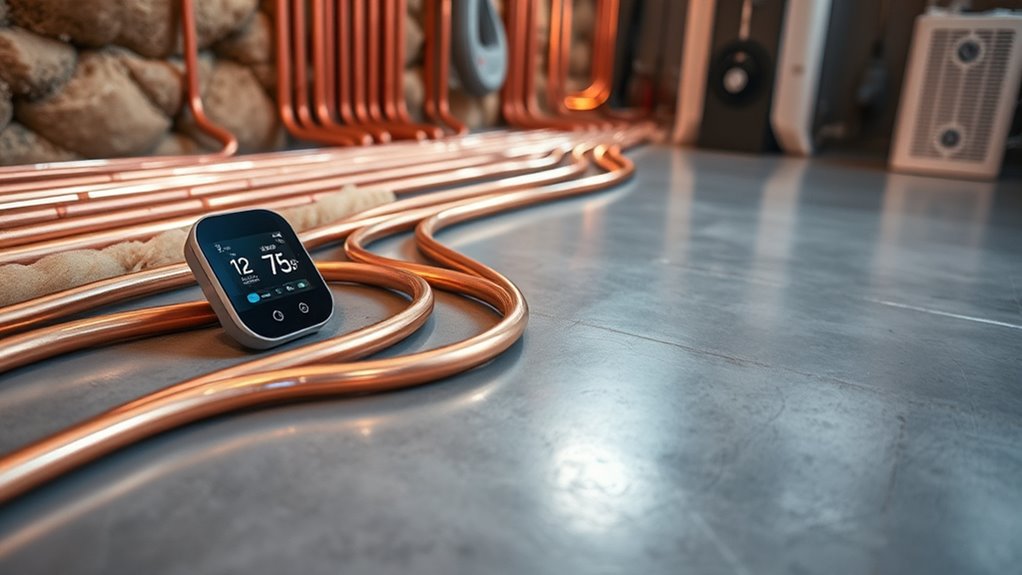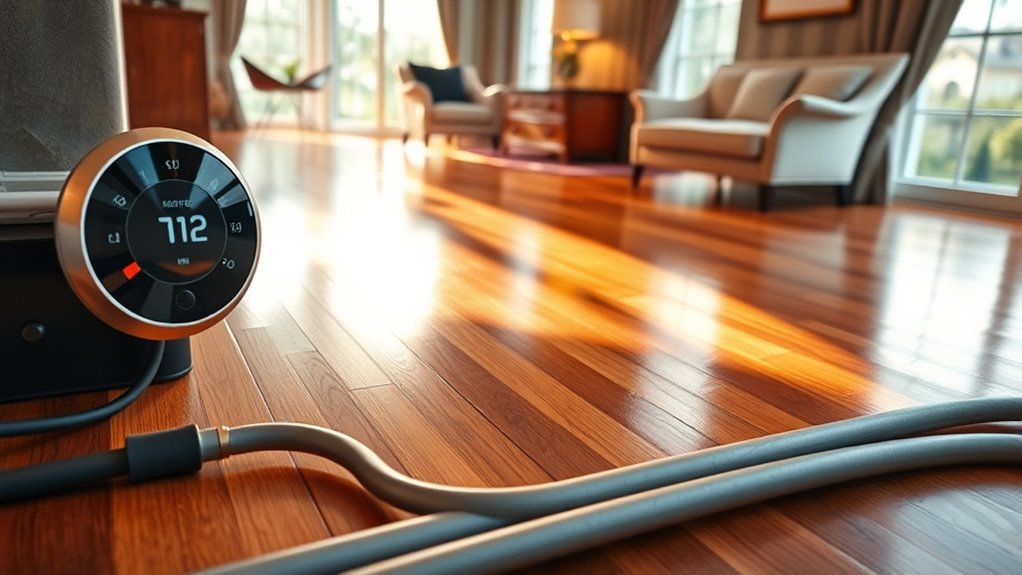When estimating radiant floor heating costs, you’ll want to take into account five key factors. First, the size of your heated area affects material and labor expenses. Second, choosing between hydronic or electric systems impacts both installation complexity and operating costs. Third, your flooring type influences heat efficiency and energy use. Fourth, the installation’s complexity drives labor charges. Finally, the energy source affects long-term costs and efficiency. Exploring these will help you make an informed decision tailored to your needs.
Size of the Heated Area

The size of the heated area plays a crucial role in determining the overall cost of radiant vloer heating installation. When evaluating your space, you need to take into account the heated area dimensions accurately, as costs scale with square footage. Larger areas require more tubing or mats and increased energy supply, directly impacting installation and operational expenses. Additionally, the room layout influences installation complexity; irregular shapes or multiple zones can necessitate customized designs, increasing labor time and material usage. By precisely appraising your heated area dimensions and optimizing the room layout for efficient coverage, you maintain control over costs while achieving effective warmth. Understanding these factors empowers you to balance freedom in design with financial feasibility, ensuring your radiant floor heating system aligns with your practical and budgetary goals.
Type of Radiant Heating System
Choosing one of the two primary types of radiant heating systems—hydronic or electric—significantly influences both upfront installation costs and long-term operational expenses. Hydronic systems circulate heated water through tubing beneath the floor, offering superior heating efficiency and cost-effectiveness for larger spaces, though they require higher initial investment and complex installation. Electric systems use embedded electric cables or mats, making them simpler to install and ideal for smaller areas or retrofits, but they generally have higher operating costs due to electricity prices. Understanding these system types helps you balance installation complexity, energy consumption, and maintenance demands. Your choice directly impacts not only the functional performance of the heating system but also your freedom to manage costs over time, ensuring your investment aligns with your heating needs and budget priorities.
Flooring Material Compatibility

Since the type of radiant heating system you select affects installation and operation costs, it’s equally important to contemplate how different flooring materials interact with these systems. Flooring material compatibility directly influences heat transfer efficiency and overall energy usage. Consider these factors:
Choosing the right flooring material is key to maximizing radiant heating efficiency and controlling energy costs.
- Tile Compatibility: Tiles conduct heat exceptionally well, optimizing system performance and reducing operational expenses.
- Hardhouten vloeren: Wood’s natural insulation can hinder heat flow, requiring higher system output and potentially increasing costs.
- Carpet Insulation: Thick carpets with dense padding act as insulators, diminishing heat transfer and forcing the system to work harder.
- Vinyl and Laminate: These materials vary widely in thermal conductivity; selecting types designed for radiant heating guarantees effective warmth without damage.
Choosing compatible flooring enhances system efficiency, allowing you to maintain comfort while managing costs effectively.
Installation Complexity and Labor Costs
Although radiant floor heating offers efficient warmth, you should be aware that installation complexity greatly impacts labor costs and overall project expenses. Different installation techniques, such as wet or dry systems, require varying levels of skill and time, influencing labor intensity. Retrofitting an existing floor typically demands more labor than new construction due to demolition and subfloor preparation. Additionally, maneuvering obstacles like plumbing or electrical wiring adds to difficulty and costs. The current labor market also plays an essential role; shortages of experienced installers can drive up hourly rates and extend project timelines. To maintain control over expenses, you’ll want to hire qualified professionals familiar with your chosen system and local labor conditions, ensuring the installation is efficient without compromising quality or your freedom to customize.
Energy Source and Efficiency Considerations

When evaluating radiant floor heating systems, you’ll need to assess the type of energy source powering the system, as it directly affects both operational costs and overall efficiency. Different sources vary considerably in energy efficiency and cost comparison, influencing your long-term expenses.
- Electric Systems: Provide high energy efficiency with quick response times but may incur higher operational costs depending on electricity rates.
- Hydronische systemen: Use water heated by boilers; offer superior energy efficiency, especially when paired with high-efficiency boilers or renewable energy.
- Renewable Energy Integration: Incorporating solar or geothermal sources can drastically reduce energy costs but involves higher initial investment.
- Fuel Type Impact: Natural gas, propane, or oil affect running costs and emissions, so choose based on availability and efficiency.
Understanding these factors guarantees you select a system that balances upfront cost with sustainable operation.




